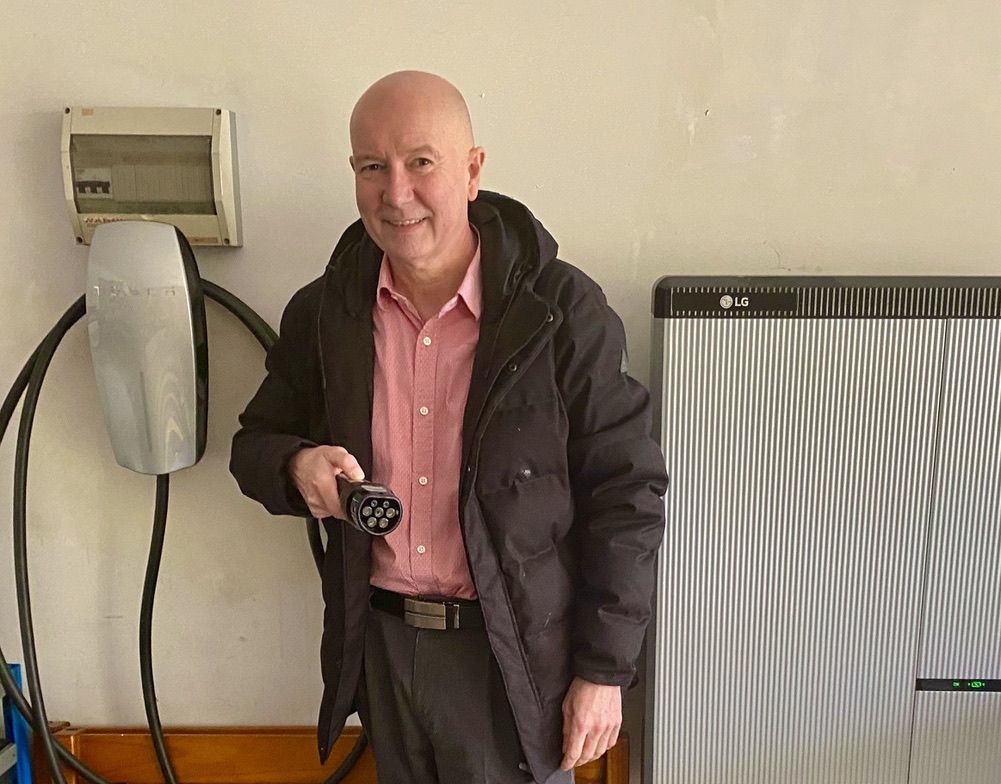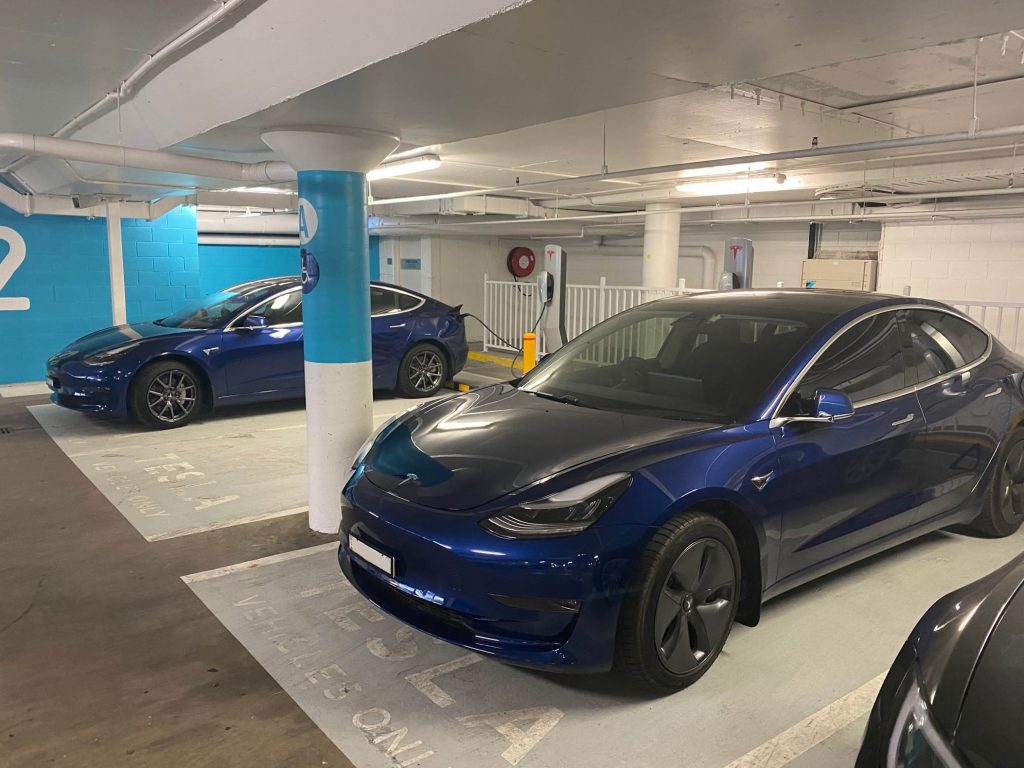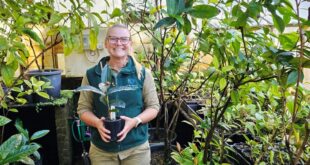
“Alexa, play ‘Golden Brown’ by The Stranglers.”
I’m visiting John Campbell, the President of the Rotary Club of Blackheath, and it’s my first time experiencing what’s described as a ‘smart home’. From the music John asks Alexa to play on demand, to the changing coloured lights in the lounge room, to the online security systems, to the demo of a Tesla on autopilot out the front … this home is fun, it’s fascinating, and it’s an example of a life lived without burning fossil fuels.
Check out the Tesla on Autopilot in this video:

John tells me how he joined Rotary 24 years ago to get to know people in the community that make a difference. People he could learn from.
He’s certainly one of those people himself. I find that the whole time I’m with him I’m completely enthralled and wanting to soak up as much information as I can.
John, whose background is in electronic engineering, goes on to talk about how he’s always constantly wanted to learn things and, even though it’s been disappointing that his term as President in Blackheath has mostly been spent in Lockdown, he’s taken the opportunity of the last few months to learn even more. Over time he’s taught himself to cook, to put up shelves, to paint.
He’s also overseen an inspiring Rotary Zoom program that’s kept everyone informed and entertained over these difficult four months. But now, at last, Rotary is back meeting in person at 7pm on a Thursday night at the Blackheath Golf and Community Club. John is keen for more locals to come along and experience why he’s been a Rotarian for over two decades.
One of the most important things John says he’s learnt in Rotary is how to work with a diverse group of people and get the best out of them.
“The Group gets the best out of everybody”, John says.
“Rotary is a great bunch of people with some real talent and passion”.
Originally from the UK, John moved to Mount Victoria in January 2018 after spending most of his adult life in the Northern Beaches. “Mount Victoria is not dissimilar to Wales, where I grew up. I like the quiet and I’m not a huge fan of the beach.”
John started his career in lighting and sound production, and then the photo-finishing business (processing, developing and scanning photos), travelling the world for the photo division of Rank Electronics that he bought with a partner and ran from 1986-1997. As digital photography marked the death knell for Kodak, he completed a Bachelor of Business and moved into banking and finance soon after his children were born.
It was around this time that he joined the Rotary Club of Brookvale, where he took on the role of President in 2001 and 2016. He was Treasurer 12 times until he moved to Blackheath and his son took over.
We meander through his recollections of years working through one bank take-over after another, but then find ourselves talking about V2G technology – Vehicle to Grid – which is very similar to what John’s already doing in his ‘smart home’. Solar arrays charge your car and the car can then run house batteries during the day. Power can also feed back into the grid. Nissan is doing it with the Leaf e+.
John talks about how Australia has one of the highest penetrations of rooftop solar in the world but the grid isn’t designed for that … a lot of power on a sunny day can lead to grid instability. That’s where local battery storages support the grid by charging up during peak supply, discharging out in the evening and smoothing everything out.
He talks about his Tesla too. “It’s great for the environment but what I love most is that its FAST … and responsive to the accelerator. It’s really easy to drive.”
I then ask him about the different car chargers he uses.
“It’s a bit dangerous to ask an ex-electronic engineer who’s been in Lockdown a question like that as you’ll probably get an answer longer than you expected!”
I settle in.
“Chargers basically fall into 2 categories. AC (home or business) and DC (commercial).”
AC
“This is the portable charger you saw which I have in the car and it simply plugs into a normal power point. These will charge at around 2-3Kw. Used for charging overnight. More than enough for most people unless you are doing 100km+ in a day regularly. They come with the car.
There is the high power wall charger (HPWC) I have on the garage wall. These are used by some people at home that do large Kms a day and can charge at around 11Kw if you have 3 phase to your house. 7Kw if you don’t. They are also used by businesses like shopping centres. Up here the Hydro and Scenic World have them. Most shopping centres in Sydney have them and this is how I charge in Sydney 99% of the time. They are designed for you to fill up while you are at a destination and doing something (shopping, eating etc). Hence they’re often called Destination Chargers.
Here is the Warringah Mall Shopping Centre on the Northern Beaches:

Then you have DC chargers
They start at 50Kw. The NRMA have a charging network that uses 50Kw units which are currently free for everybody but will change to free for members only at some point. This is what is at the Workies at Lithgow and is my preferred charger in the area. I can more than half fill the car while I walk to do my shopping at Woolworths. It’s 910m away, if you were wondering, and the only catch is that I have to remember not to buy 10kgs of bulk bread flour like I did once. My arms did not appreciate the walk back.


The most famous of the DC chargers are the Superchargers. They are 150Kw to the new 350Kw. The closest to us are Macquarie Centre Sydney and Bathurst. This is also what is going in at Blaxland. These are designed for a road trip where you’re driving 100s or 1000s of Kms to get somewhere and just want to stop for 10-15min on the way to fill up. I have only ever used one once briefly to check that the car talked to them. It did. The most I have driven in a day is 320 kms so I have had no need of them.”
John Campbell is like an encyclopaedia of knowledge about so much that I’m interested in; so much that we all need to know to restore Planetary Health for generations to come.
I’ll look forward to asking him more at the next Rotary meeting …. John’s most definitely someone who’s making a difference, and he’s most definitely someone I can learn from.
Rotary meets at 6.45pm for a 7pm start on Thursdays at the Blackheath Golf and Community Club



